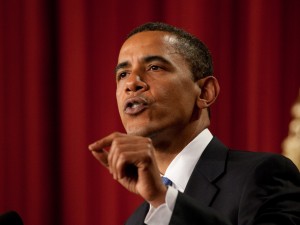By Jerry Hinkle
As advocates working for a price on carbon, we sometimes hear criticisms of the policy we support. You may have heard some of the criticisms yourself: that current carbon pricing programs have not sufficiently reduced emissions in practice, that direct regulation has been more effective, or that passing a carbon tax is too difficult politically.
In CCL, one of our core values is integrity. To us that means that we are open to new information, and we refine our solutions to make them better. So, we’re willing to explore these criticisms to understand the degree to which they have merit. Let’s take a look at each one.
Studies show a strong price reduces emissions
First, has the carbon pricing that has been in effect reduced emissions? It has. This study of 142 countries with carbon prices over 20 years shows that every 1€ ($1.18) increase in price reduces the emissions growth rate by 0.3%, which is substantial.
Closer to home, this post shows research indicating that British Columbia’s carbon tax reduced emissions 5-15%. Not surprisingly, these empirical findings are consistent with the analysis indicating a price rising to $100 in 10 years, like that of the Energy Innovation and Carbon Dividend Act, puts the U.S. on a path to net-zero emissions by 2050.
Certainly, there have been examples of programs wherein the carbon prices have been too low to significantly reduce emissions. As U.S. examples, the RGGI cap and trade (C&T) prices and California’s C&T prices have increased of late, but are still just $8 and $19 per ton, respectively. Further, the programs cover only a small proportion of total emissions, so total reductions disappoint.
However, the World Bank believes the problem in the U.S. and globally is not carbon pricing, but a lack of it. In their State and Trends of Carbon Pricing 2021, they state that carbon pricing is “a necessary” component of climate policy but that “it must be sufficiently ambitious” (pg. 9). They reference a comprehensive UN study that suggests global carbon prices starting at $40-$80 per ton and rising over time are sufficient to meet the Paris goal of constraining global temperatures to less than 2°C. They state, “It is clear the potential of carbon pricing is still largely untapped…there is an urgent need to scale the scope and ambition of these instruments” (pg. 8).
Similarly, the IMF recently proposed a global carbon price floor as “the fastest and most practical way to achieve” the Paris target. There is a clear consensus among experts: what is needed globally to meet the Paris objective is stronger carbon pricing.
Regulations offer comparable reductions, but at a cost
But can regulations be just as effective in reducing emissions? The research makes clear that they can, but will cost more (page 23), will likely not be as good for the poor as CFD (pg. 24), and take longer and be vulnerable to judicial challenge.
Further, this IMF analysis indicates a market-based climate policy will increase employment, while regulations will decrease it (CH 3, pg. 92), and that a carbon tax with some green investment will increase U.S. and world GDP (pg. 100), something a regulatory approach can’t do without increasing the deficit.
Political feasibility
Finally, some argue that carbon pricing is too hard to achieve politically, and that regulations would be easier to pass. Though this analysis largely dispels that notion, in truth, we do not yet know which would be easier to pass: an ambitious carbon price, a regulatory package that accomplishes the same, or some combination thereof.
CCL advocates for pricing because it works faster, is better for the economy and jobs, and should be more durable by attracting support from moderates, but we are completely open to anything that greatly reduces emissions without hurting the poor and communities that are most impacted by pollution.
Connecting beyond criticism
Over 3,500 economists, including 28 Nobel Laureates, have signed a statement saying, “A carbon tax offers the most cost-effective lever to reduce carbon emissions at the scale and speed that is necessary.” It’s clear from the studies and analyses detailed above that the Economist’s Statement is well supported (good thing: it would be terribly embarrassing if 28 Nobel winners all whiffed!).
Carbon pricing is the foundational climate policy tool that will “reduce carbon emissions at the scale and speed that is necessary” to achieve our climate objective. Still the criticisms have some validity: some pricing programs have been insufficient, some regulations have had success, and U.S. climate politics have been harder than expected.
At CCL, our advocacy begins with building relationships, through appreciating and respecting the views of others. So how best to use this research when you are talking with critics or doubters of carbon pricing? There is a time and place for offering facts, and it’s usually after trust has been built and people have expressed interest in knowing more. Whether the critics of carbon pricing come from the left or the right, taking time to understand the reasons people object and to identify shared values is crucial to whether the information you offer will be well-received. You’ll know the time is right when people start asking you questions about why you think carbon pricing is essential!




